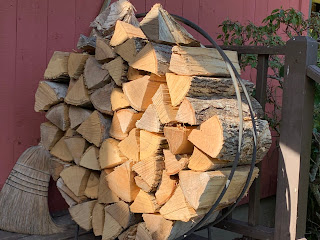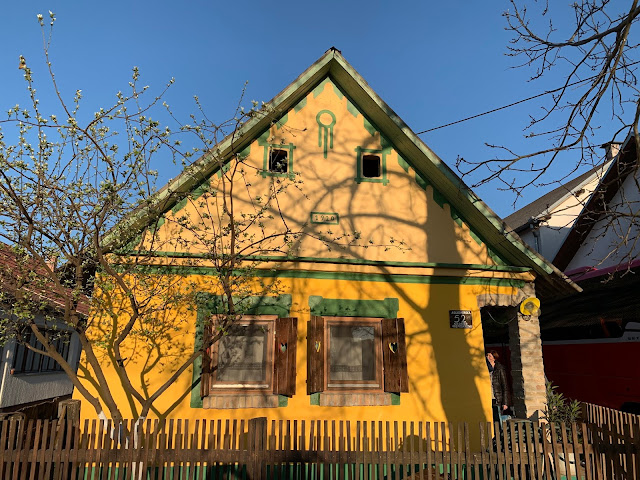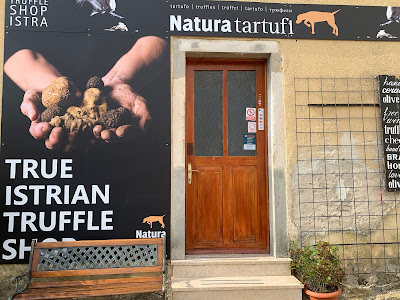 |
| Collapse. Is this too grim a metaphor? |
It only just occured to me that the end of this year marks the end of a decade. Usually it seems one works up to that realization, beginning with nostalgic looks back to the first few years, followed by some thoughts about how far we've come, best moments, blah, blah. But "usually" applies to nothing anymore. The world is different.
Like too many people (okay, Republicans) who are too afraid the president will shoot them (metaphorically) to admit having any modicum of integrity, I too want to hide. Sometimes, at least. It's all too horrible and cuts too deep. I can't bear listen to every argument and discussion, or take in heavy doses of political rhetoric. I cannot listen to the live words of our White House narcissist-in-chief. For a long time now I've also not unable to watch nature films, beautiful nature films, because toward the end there is always the inevitable "...now, however..." statement about the future, or the lack of one. Nevertheless I'm a news wonk. I like knowing all the details about whatever's happening. It's just that I can't watch it unfurl in real time. No live debates for me, I'll read the summaries the next day, thank you.
What I have patience for though is the reasoned analysis, the thoughtful insight, the story behind the story, the personal story, what makes something or someone tick. So I check the NYTimes, the Huff Post, CNN, CBS, BBC and whatever else turns up. So besides fiction I read Masha Gessen's "The Future is History" (Putin's Russia), and "Midnight in Chernobyl," (more Russia), "Red Notice" (still more Russia) and "Home Now," (immigrants in Maine) and "Amity and Prosperity" (corporate pollution), plus anything Elizabeth Kolbert writes about the global environment. And so on and on. It's like streaming versus network TV.
Even the words that we are speaking now
thieving time
has stolen away,
and nothing can return. 1
But why talk about what we already know.
I can measure ten years in one way:
 |
| March 2011 |
 |
| Now |
Things do change in ten years.
 |
| He knew the damselfly was on his forehead. Ken had no quarrel with insects. |
Words fail.
Back to now!
 |
| (Photo/painting by Jim Westphalen, Edgewater Gallery, Middlebury) |
Better to talk about things that happen here. It's winter, and once again easy to find coyote, fox, and deer tracks. Of which there are many. Since I mentioned politics earlier I should mention that I try to actively support Protect Our Wildlife, an organization that managed to get a bill passed outlawing coyote killing contests in this state. (About time, you might think.) Along with our global environment under threat, wildlife is having it harder with every passing year. To a degree, even in Vermont. Fragmentation of habitat is probably the biggest challenge. But archaic hunting and trapping regulations, supported by a retrograde Fish and Wildlife Commission, aren't helping.
Here's a story:
On October 19th a pack of bear hunting hounds attacked two hikers and their puppy on forest trail in nearby Ripton. The couple, who had been hiking in the area for many years, were swarmed by five 60-70 pound hounds wearing GPS collars. The pup was attacked first, and when they tried to protect the dog, they too were attacked, knocked down and bloodied. The attack went on and on, until finally a member of the hunting party running the hounds showed up. Instead of the cowed bear the hunters had expected to see, they found the injured couple and their dog. (All survived.) Collared hounds are generally far ahead of their followers, heedless of whose property they are passing through, and, obviously, can't be guaranteed to circle in on only a bear. Protect Our Wildlife is currently lobbying for a regulation to shorten what is currently a ridiculously long bear hound training period (allowing hounds to chase bears for practice without any treed and doubtless terrorized bears geting killed) that now runs from June into September, followed by bear hunting season. This is only a first and very modest step.
Here's a story:
Even though I support stopping the killing of coyotes any old time and by any means, having a close encounter with one is still unnerving. My dog Skyler doesn't venture beyond the line he perceives as the limit of the invisible (mild shock-inducing) fence. This is fortunate, for in the dark he guards the perimeter. One recent evening about ten o'clock after I let him out for his final outside time he began barking and running madly back and forth in circles around the house. (Not for the first time.) I called him again and again, but what his nose was telling him shut out anything his ears may have heard. He knew something was out there. I was in pajamas and bathrobe, but I put on boots, grabbed his leash and a flashlight and went outside to try and grab hold of him. (Also not for the first time.) First I scanned the field behind the house with my flashlight to see if he was barking at an animal I could see. The beam caught a coyote in mid-field, looking right back at me. In the spotlight it began to walk closer. Then it walked even closer, slowly, in no rush. It kept coming closer. It was nearing the lawn. I ran back into the house and returned to the same spot with the leash, the flashlight, and now armed with a long walking stick. The coyote came within fifteen or maybe just ten feet short of the lawn and the invisible border behind which was a crazed Skyler. The coyote stood still, directly facing this mad, hysterical creature. I clapped my hands. Nothing moved. I slapped the flashlight. Anything to make a noise. Still nothing. The coyote kept standing there, looking at this wild agitated thing that was Skyler. Trying not to think what might happen next, I ran toward the coyote and shouted "Shoo, shoo!" Thankfully, he turned at last and–very, very, slowly, reluctantly–began walking further back into the field. But he was in no hurry. He stopped and looked back at us. (He was beautiful, big, like a wolf.) Then he vanished into the dark. I thought, maybe he figured he decided he didn't have time for this kind of nonsense.
 |
| Collapse. But it no longer looks so grim. |
Local news. I can deal with that. It tends to bring you back to where you are.
I feel better about 2020 already. The events here are the ones that seem to matter most.
Perhaps God has many more seasons
in store for us––
or perhaps the last is to be
this winter
that guides back the waves
of the Tyrrhenian Sea
to break against
the rough pumice cliffs.
You must be wise. Pour the wine
and enclose in this brief circle
your long-cherished hope. 2
1 Horace, Odes, quoted in "The Order of Time," Carlo Rovelli
2 Ibid.






























































